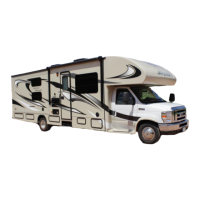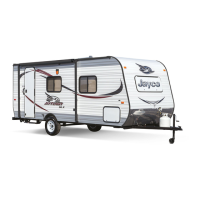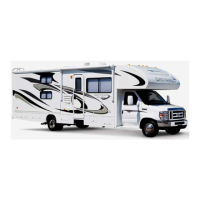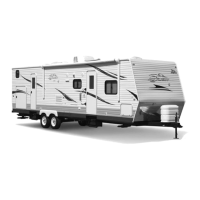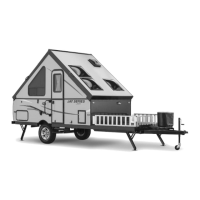2-5
High temperatures can activate glue and adhesive vapors. If you close up a
recreation vehicle on a hot day, the chemicals used in its construction may be
detected for months after the vehicle was constructed (for more information, refer
to Section 2, Formaldehyde).
NOTE: The alarm is wired directly to the motor home 12-volt electrical
system, with continual power being supplied by the motor home battery. There is
no 9-volt battery power supply in the carbon monoxide/propane alarm. If the
battery cable is disconnected at the battery terminals, the alarm will not work.
What you should do if the alarm sounds
1. Operate the RESET/SILENCE button.
2. Call your emergency services (fire department or 911).
3. Immediately move to fresh air (outdoors or by an open door or window).
4. Do not re-enter the premises or move away from the open door or window
until the emergency service responders have arrived, the premises have
been aired out, and your alarm remains in its normal condition.
If your alarm reactivates within a 24-hour period, repeat steps 1-4 and call a
qualified appliance technician to investigate for sources of carbon monoxide from
fuel burning equipment and appliances, and inspect for proper operation of this
equipment. Make sure that motor vehicle(s) are not, and have not been, operating
in an attached garage or adjacent to the motor home.
If problems are identified during this inspection, have the alarm serviced
immediately. Note any combustion equipment not inspected by the technician and
consult the manufacturer’s instructions or contact the manufacturer directly for
more information about carbon monoxide safety and this alarm.

